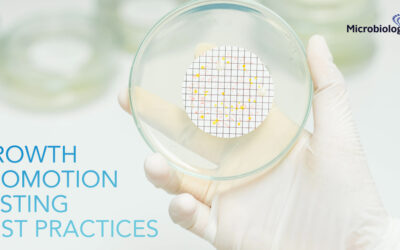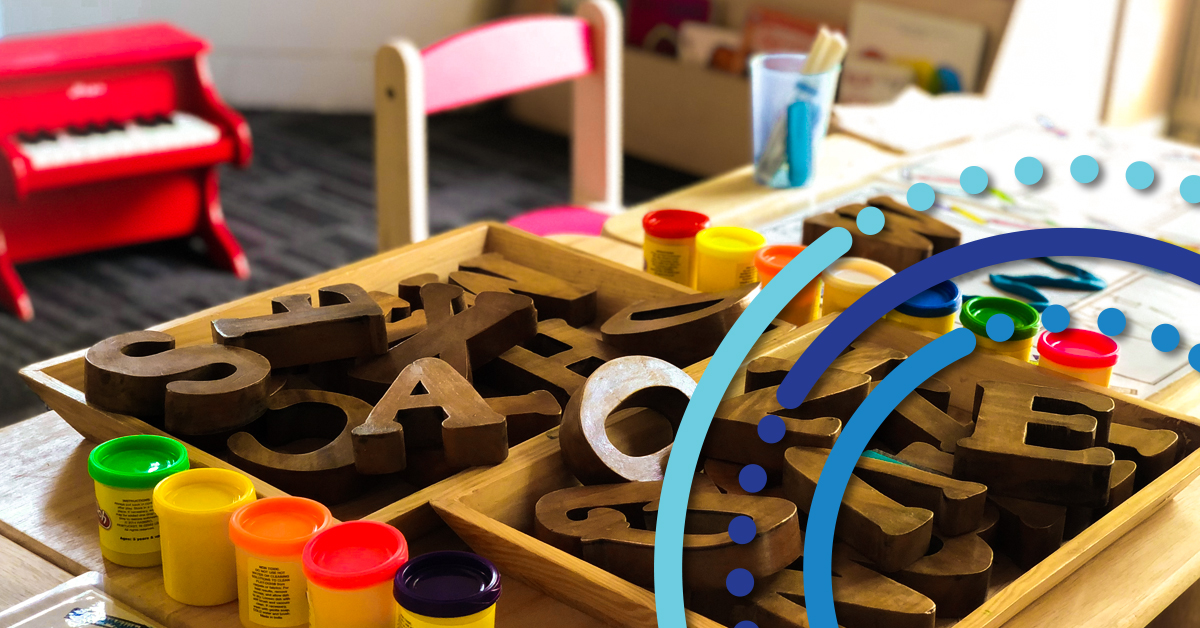Uses for QC Microorganisms
Water laboratories use QC microorganisms for many purposes including:
- QC of new batches of media and reagents
- Initial and ongoing demonstration of capability
- QC of test batches
- Verification and validation
- Spiking matrices
- Meeting ISO 17025 requirements:
- ANSI/ISO/IEC 17025:2005, General requirements for the competence of testing and calibration laboratories, 5.9.1 states, “The laboratory shall have quality control procedures for monitoring the validity of tests and calibrations undertaken…This monitoring shall be planned and reviewed and may include, but not be limited to, the following: a) regular use of certified reference materials and/or internal quality control using secondary reference.”
- Meeting Standard Methods for water and wastewater requirements:
- Section 9020 Quality Assurance/Quality Control states, “Positive and negative control cultures: Use certified reference cultures. For each lot of media received, each lot of media received, each lab prepared batch of media, and each lot of purchased prepared media, verify appropriate response by testing with known positive and negative control cultures for the organism(s) under test.”
EPA Recommendations
The following EPA1 table lists several bacterial species that are recommended as controls for several groups of microorganisms commonly targeted in water testing methods.
| Group Targeted | Positive Controls | Negative Controls |
| Total Coliform | Escherichia coli Enterobacter aerogenes | Staphylococcus aureus
Pseudomonas aeruginosa Proteus vulgaris |
| Fecal Coliform | Escherichia coli
Klebsiella pneumoniae (thermotolerant) |
Enterobacter aerogenes |
| Group Targeted | Positive Controls | Negative Controls |
| Escherichia coli | Escherichia coli (MUG positive strain) | Enterobacter aerogenes
Klebsiella pneumoniae (thermotolerant) |
| Fecal Enterococci/Streptococci | Enterococcus faecalis Enterococcus faecium | Staphylococcus aureus
Escherichia coli Serratia marcescens |
1 EPA Manual for the Certification of Laboratories Analyzing Drinking Water, Criteria and Procedures Quality Assurance
Recommended QC Strains for Water Testing
Based on EPA, Standard Methods, ISO 17025 and other standards, Microbiologics has developed a list of suggested strains for use in a water microbiology laboratory’s quality control program. If using a kit, consult the manufacturer’s QC recommendations.
| Microorganism Strain | Strain Characteristics |
| Aerococcus viridans derived from ATCC® 10400™* | |
| Enterobacter cloacae subsp. cloacae derived from ATCC® 35030™* | |
| Enterococcus faecalis derived from ATCC® 19433™* | |
| Enterococcus faecalis derived from ATCC® 29212™* | |
| Enterococcus faecalis derived from ATCC® 7080™* | |
| Enterococcus faecium derived from ATCC® 35667™* | |
| Enterococcus faecium derived from ATCC® 6057™* | Listed as an appropriate QC strain by U.S. Environmental Protection Agency, Manual for Certification of Laboratories Analyzing Drinking Water. |
| Escherichia coli derived from ATCC® 11775™* | Thermotolerant |
| Escherichia coli derived from ATCC® 25922™* | Listed as an appropriate QC strain by U.S. Environmental Protection Agency, Manual for Certification of laboratories Analyzing Drinking Water; Microbiologics enumerated E. coli, 0335, derived from ATCC® 25922™*, is not recommended for Fecal Coliform testing on mFC agar at 44.5°C. It is best to test a suspension of E. coli, 0335, prepared from fresh colonies grown overnight. |
| Escherichia coli derived from ATCC® 35218™* | |
| Escherichia coli derived from ATCC® 35421™* | |
| Escherichia coli derived from ATCC® 51813™* | |
| Escherichia coli derived from ATCC® 8739™* | Listed as an appropriate QC strain by U.S. Environmental Protection Agency, Manual for Certification of Laboratories Analyzing Drinking Water. |
| Klebsiella aerogenes derived from ATCC® 13048™* (formerly Enterobacter aerogenes)
|
Listed as an appropriate QC strain by U.S. Environmental Protection Agency, Manual for Certification of Laboratories Analyzing Drinking Water. |
| Klebsiella pneumoniae subsp. pneumoniae derived from ATCC® 13883™* | Listed as an appropriate QC strain by U.S. Environmental Protection Agency, Manual for Certification of Laboratories Analyzing Drinking Water; Not thermotolerant. Does not grow at 44.5°C. |
| Klebsiella pneumoniae subsp. pneumoniae derived from ATCC® 27736™* | Thermotolerant
|
| Klebsiella variicola derived from ATCC® 31488™* | Thermotolerant
|
| Klebsiella pneumoniae subsp. pneumoniae derived from ATCC® 33495™* | Thermotolerant
|
| Kocuria rhizophila derived from ATCC® 9341™* | |
| Legionella pneumophila subsp. pneumophila derived from ATCC® 33152™* | Used for quality control of buffered charcoal yeast extract (BCYE) agar used in tests for water quality. Fluorescent antibody serogroup 1. |
| Proteus mirabilis derived from ATCC® 25933™* | |
| Proteus hauseri derived from ATCC® 13315™* | Listed as an appropriate QC strain by U.S. Environmental Protection Agency, Manual for Certification of Laboratories Analyzing Drinking Water. |
| Pseudomonas aeruginosa derived from ATCC® 10145™* | |
| Pseudomonas aeruginosa derived from ATCC® 27853™* | Listed as an appropriate QC strain by U.S. Environmental Protection Agency, Manual for Certification of Laboratories Analyzing Drinking Water. |
| Serratia marcescens derived from ATCC® 14756™* | Listed as an appropriate QC strain by U.S. Environmental Protection Agency, Manual for Certification of Laboratories Analyzing Drinking Water. |
| Serratia marcescens derived from ATCC® 43862™* | |
| Staphylococcus aureus subsp. aureus derived from ATCC® 25923™* | |
| Staphylococcus aureus subsp. aureus derived from ATCC® 6538™* | Listed as an appropriate QC strain by U.S. Environmental Protection Agency, Manual for Certification of Laboratories Analyzing Drinking Water. |
Visit our website to find the strains listed above in several easy-to-use formats including certified reference materials (CRM). Contact our Technical Support team at 1.320.229.7045 or techsupport@microbiologics.com for help determining what format is right for your laboratory.
References
International Organization for Standardization. (2004). ISO 11731-2: Water quality-Detection and enumeration of Legionella – Part 2: Direct membrane filtration method for waters with low bacterial counts (1st ed.). Switzerland: ISO.
Root, P., Hunt, M., Fjeld, K., & Kundrat, L. (2014). Microbiological Water Methods: Quality Control Measures for Federal Clean Water Act and Safe Drinking Water Act RegulatoryCompliance. 97(2).
Standard Methods Committee, 2005. Hunt, M., Braun-Howland, E., Dichter, G., Hall, N., & Harris, S. 9020 Quality Assurance/ Quality Control; Standard Methods for the Examination of Water and Wastewater. Washington, DC: American Public Health Association.
United States Environmental Protection Agency. (2005). Chapter V Critical Elements for Microbiology; Manual for the Certification of Laboratories Analyzing Drinking Water Criteria and Procedures, Criteria and Procedures Quality Assurance (5th ed.). Cincinnati, Ohio: US EPA Office of Water.
![]()






I like what you said about QC microorganisms. I think that water testing should be done by professionals. If I needed such a service, I would call the best company in town.
Nice Article!!
ATLAS is an ISO 9001:2015 Certified Testing Laboratory duly certified by International Council for Machinery Lubrication – ICML Certified Level II Machinery Lubricant Analyst MLA II 002616. We are a state-of-the-art laboratory carrying out various tests for Lubricating Oils and Petroleum products. Over the years ATLAS Labs has provided a reliable platform in the field of testing and today is in the position to provide its analysis services to large national and international clients on a global scale.
I would like to find out if there is any laboratory which carries out quality control analysis of water and using Vitek 2 XL Microbial Identification System for their microbial identification.
Good question Opusoni! Unfortunately, we are not aware of specific protocols that independent laboratories are following.
Best article which is worth reading it . Thanks
The article is very good with useful content . Thanks for info.
A good article which is worth reading it . Thanks for information